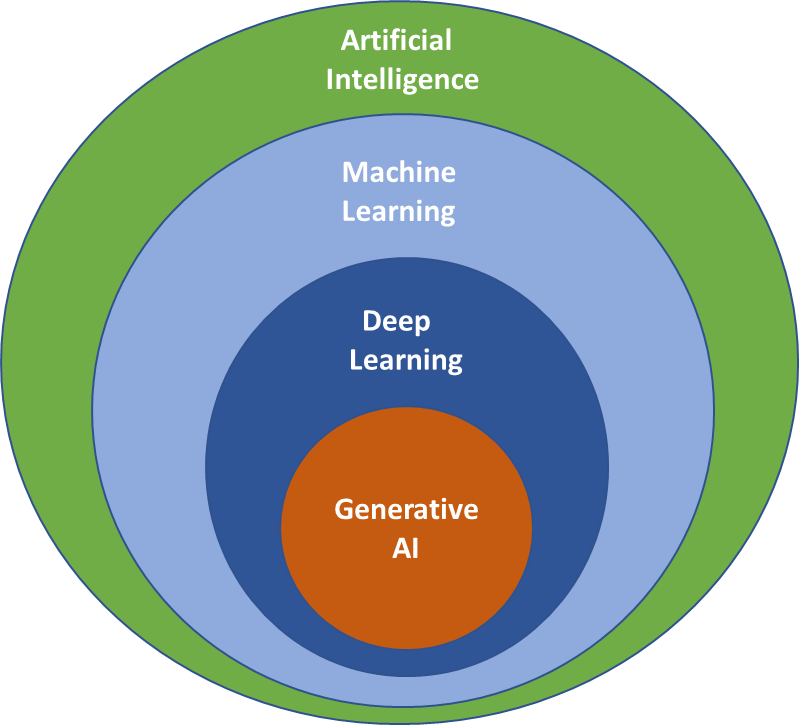The Relationship Between Machine Learning and Generative AI
In the rapidly evolving field of artificial intelligence (AI), machine learning (ML) and generative AI stand out as two crucial components driving technological advancements. Understanding their relationship is essential for grasping the current and future capabilities of AI.

What is Machine Learning?
Machine learning is a subset of AI that focuses on developing algorithms that enable computers to learn from and make predictions or decisions based on data. Instead of being explicitly programmed to perform a task, ML models improve their performance through experience. The key techniques in machine learning include supervised learning, unsupervised learning, and reinforcement learning.Machine learning
Supervised Learning:
Models are trained on labeled data, learning to map inputs to outputs.
Unsupervised Learning:
Models identify patterns and relationships in unlabeled data.
Reinforcement Learning:
Models learn by interacting with an environment, receiving rewards or penalties for actions.
What is Generative AI?
Generative AI refers to a class of AI models designed to generate new content. This content can range from text and images to music and video. Generative AI models create outputs that resemble real data, often producing highly realistic and creative results. Key examples include Generative Adversarial Networks (GANs) and Transformer-based models like GPT-3 and GPT-4.
Generative Adversarial Networks (GANs):
GANs consist of two neural networks, a generator and a discriminator, that work together to create realistic data samples.
Transformer Models:
These models use attention mechanisms to generate coherent and contextually relevant text.
The Interconnection Between Machine Learning and Generative AI.
Generative AI is deeply rooted in machine learning principles. The relationship between the two can be understood through the following points:
1. Machine Learning Techniques Power Generative Models:
- Generative AI models are built on ML techniques, especially deep learning. For instance, GANs use deep neural networks to generate and refine data.
- Transformer models leverage ML algorithms to understand and generate human-like text.
2. Data-Driven Learning:
- Both machine learning and generative AI rely on large datasets to train their models. The quality and quantity of data directly influence the performance and realism of the generated content.
- Machine learning algorithms are used to preprocess and structure this data, ensuring generative models have the necessary information to learn from.
3. Innovation Through Synergy:
- The advancements in ML techniques have paved the way for more sophisticated generative AI models. For example, improvements in neural network architectures and training methodologies directly enhance the capabilities of generative models.
- Conversely, the challenges encountered in developing generative AI models often lead to innovations in machine learning. Techniques such as adversarial training in GANs have introduced new ways to improve model robustness and accuracy.
4. Applications Across Domains:
- Both fields contribute to a wide array of applications. In natural language processing (NLP), ML algorithms are used to analyze and understand text, while generative AI models can produce human-like text for chatbots, content creation, and translation services.
- In computer vision, ML techniques are used for image recognition and classification, while generative AI can create new, realistic images for use in entertainment, design, and marketing.
Real-World Examples
Several real-world applications illustrate the synergy between machine learning and generative AI:
Content Creation:
Platforms like OpenAI’s GPT-4 use ML to understand language patterns and generative AI to produce text, aiding in content creation, writing assistance, and automated journalism.
Image Synthesis:
GANs are used in creating realistic images for virtual environments, enhancing gaming experiences, and generating synthetic data for training other AI models.
Healthcare:
Generative AI models assist in drug discovery by generating molecular structures, while ML algorithms analyze the potential effectiveness and safety of these structures.
Conclusion
The relationship between machine learning and generative AI is symbiotic and foundational to the advancement of artificial intelligence. Machine learning provides the techniques and frameworks necessary for training generative models, while generative AI pushes the boundaries of what is possible with machine learning. Together, they are transforming industries, driving innovation, and opening new frontiers in technology.
As we continue to explore the potential of these interconnected fields, the future promises even more groundbreaking developments, reshaping the way we interact with technology and the world around us.
Read our latest blog https://sharptechsolutions.co.uk/2024/08/02/cutting-edge-innovations-in-cloud-computing/
